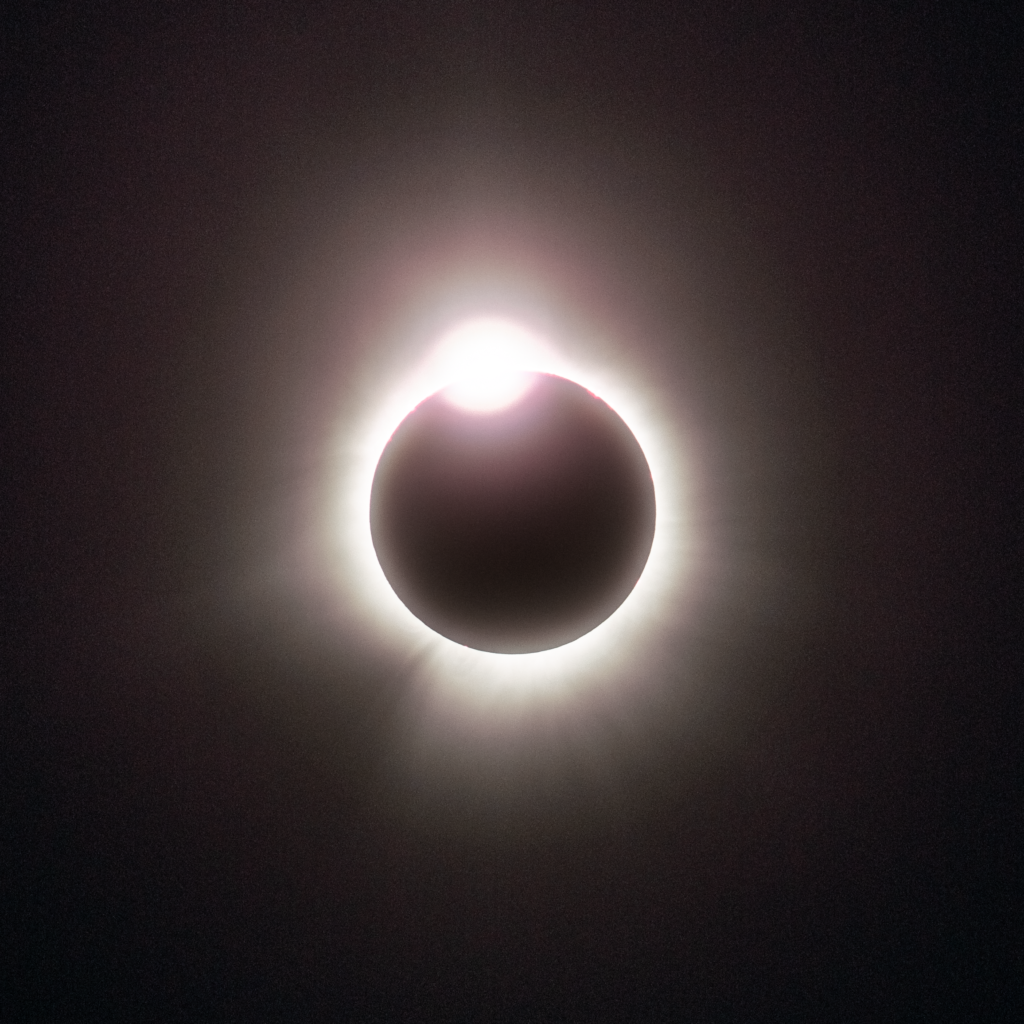
A solar eclipse is a scientific phenomenon in which the moon passes between the Earth and the Sun. On average, partial solar eclipses happen about twice a year. These are not total eclipses, and they are only visible from certain regions of the world and not at all to others. The solar eclipse that happened on April 8, 2024, was the first time since 2017 that a solar eclipse was visible from the United States. Dubbed “The Great American Eclipse,” this event was tracked from Oregon to South Carolina.
The eclipse was an event many were eager to witness, either for scientific exploration or simply fascination. There was something for everyone to take away from this experience, and the excitement was felt across the nation. Hoboken was no exception, as people took to parks, rooftops, patios, or any place outdoors where they could view the eclipse. On campus, people gathered on Babbio Patio, Davis Lawn, Edwin A. Stevens Hall, and the bleachers of DeBaun Athletic Complex with their friends to get the best view. Some professors even canceled or modified their classes during the time of the eclipse to give their students the best chance at viewing. Students in an Organic Chemistry 2 Lab were delightfully surprised to hear that class was canceled due to the eclipse, and students in Astronomy enjoyed a viewing party for the event.
With people all around Hoboken planning to view the eclipse, it was a struggle for many to get a pair of eclipse glasses. They sold out quickly in online stores, and even local stores like Warby Parker ran out of them due to high demand. Many professors on campus, specifically those in the physics department, had extra glasses to give, but those were gone just as quickly. Eclipse glasses are crucial for safely viewing solar eclipses, as they protect the eyes from harmful ultraviolet and infrared rays that can cause permanent damage. Nevertheless, people who were able to come out for the eclipse shared glasses with their friends and others around them. Some people with special filters on their phone cameras were even able to take pictures of the eclipse by pointing directly at the sun. Other students were able to take good pictures of the eclipse by focusing their lenses through the lenses of eclipse glasses.
The eclipse lasted from 2:10 p.m. to 4:35 p.m. The highest peak was visible at 3:25 p.m. While people in the path of totality in western states witnessed a total eclipse, with the moon completely covering the sun, those in northern New Jersey saw up to 90% coverage of the sun by the moon at the peak of the eclipse.
The eclipse was more than just a rare spectacle for all to observe. It was also a chance for National Aeronautics and Space Administration (NASA) scientists to study the Earth, moon, and sun. Specifically, they were able to study the sun’s corona, or outermost atmosphere. Astronaut Pamela Melory stated in a conference that studying this region of the sun is important because “‘Things are happening with the corona we don’t fully understand and the eclipse gives us a unique opportunity to collect data that may give insights into the future of our star’.” The opportunity for observations like this are unique to solar eclipses, as they are the points in time when the sun’s atmosphere is the most visible. This goes to show that everyone can gain something meaningful from an experience like this. People all over the nation from scientists and co-workers to friends and loved ones gathered to marvel at the eclipse and watch its progression. The next time we can expect a total solar eclipse to be visible from the contiguous United States will be in 2044, making this eclipse a very special and remarkable event for everyone lucky enough to witness it. New Jersey can expect to see a couple partial solar eclipses in the next few years, but none will have as much coverage as this one. Those seeking the thrill of being in the path of totality without leaving the state, will have to wait until 2079. With so much to enjoy and still so much to learn, people now wait patiently for the next total eclipse happening in the coming decades.